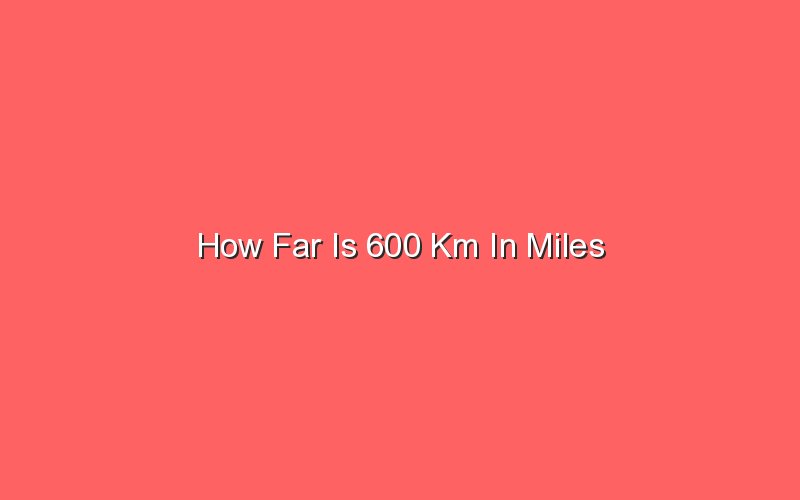When it comes to measuring distances, 600 miles can seem like a lot or a little depending on your perspective. To put it into context, 600 miles is roughly the distance from New York City to Detroit or from Los Angeles to San Francisco. It's also about the same distance as driving from London to Edinburgh in the United Kingdom. So, in terms of travel, 600 miles can be a significant distance to cover.
For those who prefer to think in terms of time rather than distance, driving 600 miles at an average speed of 60 miles per hour would take you about 10 hours. This means you could theoretically drive from one side of a state like Texas to the other in a single day, or make a cross-country road trip from coast to coast in about three days of non-stop driving.
When it comes to air travel, a flight covering 600 miles would typically take around 1.5 to 2 hours, depending on factors like wind speed and weather conditions. This means that a flight from Chicago to Atlanta or from Boston to Cleveland would fall within the 600-mile range.
- Movierulz Kannada 2023 Your Ultimate Guide To The Latest Movie Scene
- Miaz Girthmaster The Ultimate Guide To Understanding And Maximizing Your Potential
In terms of international travel, 600 miles is roughly the distance from Paris to Berlin or from Tokyo to Seoul. This means that in Europe or Asia, a journey of 600 miles could take you from one major city to another, allowing you to experience different cultures and landscapes along the way.
For those who prefer to think in terms of sports or physical activity, running 600 miles would be equivalent to completing 24 marathons back to back. It's a distance that would challenge even the most seasoned athletes, requiring months of training and dedication to accomplish.
When it comes to shipping and logistics, 600 miles can be a significant distance for transporting goods and products. Trucks carrying cargo over this distance would typically take around 12 hours to complete the journey, making it an important consideration for businesses looking to move goods efficiently across the country.
In terms of natural wonders, 600 miles is roughly the distance of the Grand Canyon in Arizona, one of the most iconic and breathtaking landscapes in the United States. It's a distance that showcases the vastness and diversity of the country's terrain, from deserts to mountains to forests.
When it comes to Google searches, "how far is 600 miles" is a popular query that reflects people's curiosity about distances and travel. It's a question that many people ask when planning road trips, flights, or other journeys, seeking to understand the scale of the distance and what it entails in terms of time and effort.
Ultimately, 600 miles is a distance that can mean different things to different people depending on their perspective and context. Whether it's a road trip, a flight, a run, a shipping route, or a journey between cities, 600 miles is a significant distance that can offer new experiences, challenges, and opportunities for exploration.
So, the next time you're wondering "how far is 600 miles," remember that it's not just a number on a map – it's a distance that can take you places and open up a world of possibilities.
Hopefully, this article has given you a better understanding of how far 600 miles really is and what it can mean in various contexts. Whether you're planning a trip, training for a race, or simply curious about distances, knowing the scale of 600 miles can help you better appreciate the world around you.
So, the next time you're faced with a journey of 600 miles, remember that it's not just a distance – it's an opportunity to explore, challenge yourself, and discover new horizons.
how far is 600 miles
how far is 600 miles in hours
how far is 600 miles from me
how far is 600 miles driving
how far is 600 miles away
how far is 600 miles in time
how far is 600 miles in minutes
how far is 600 miles by car
how far is 600 miles in km
how far is 600 miles in hours driving
- Jameliz Benitez Smith A Comprehensive Look Into Her Life And Career
- Alana Cho Nudes Debunking Myths And Understanding Privacy In The Digital Age


